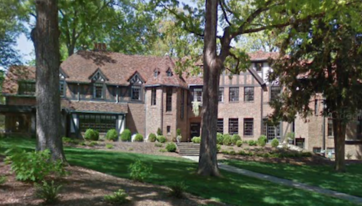It’s been more than two decades since the City of Greensboro updated its historic district design standards; however, the city is preparing to adopt new guidelines this fall. To that end, on Tuesday, Sept. 9, from 1 p.m. to 7 p.m. in the Nussbaum Room at the Central Library downtown, the Planning Department will hold a drop-in session on the revised Historic District Program Manual and Design Standards.
Those standards will apply to Greensboro’s three locally designated historic districts—College Hill, Dunleath and Fisher Park.
City planning staff, members of the Historic Preservation Commission, and Samantha Stewart of Gate City Preservation will be on hand at the drop-in session to explain the changes, answer questions and take feedback from the public.
Residents can also pick up copies of the new Certificate of Appropriateness application at the event.
According to city leaders, this marks the first substantive revision of the manual since 2003.
The updates are intended to make the document clearer and more user-friendly – while also aligning with modern preservation practices that account for energy efficiency and sustainability.
Final edits to the plan will be made after the September session, with adoption expected to occur later in the fall.
While preservation efforts are popular with many who want to maintain neighborhood character and protect Greensboro’s architectural history, historic designations are often controversial: Critics across the county and the country argue that such rules limit property rights by requiring approval for even modest changes such as windows, paint colors or additions.
Also, renovations can be delayed or blocked entirely depending on whether a proposal meets the design standards, and homeowners have complained that the process adds red tape and expense.
Others point out that historic designations can restrict modernization. In many parts of the country, these types of rules have made it difficult to install solar panels or replace old windows with more efficient models, complicating efforts to improve energy use.
Preservation rules have also been criticized for driving up costs and making housing less affordable. And housing affordability – and availability – in Greensboro and in Guilford County is quickly becoming one of the hottest topics around for area leaders.
A 2018 analysis in The Regulatory Review noted that local governments rarely conduct cost-benefit studies before imposing restrictions, and some housing advocates argue that historic designations can effectively exclude lower-income residents by limiting new development and increasing prices.
Another national debate has focused on the question of whose history is being preserved: Fewer than 10 percent of sites on the National Register of Historic Places reflect the histories of underrepresented groups – with Black, Latino, and Native American heritage sites making up only a small fraction of recognized properties. Critics have argued that preservation efforts too often favor elite or majority-white neighborhoods while overlooking others.
Supporters of preservation say Greensboro’s new standards are designed to make the process easier to navigate and to reflect modern needs without undermining the unique qualities of neighborhoods like Fisher Park or College Hill. The neighborhoods in question have a great deal of charm and character and many city residents want to make sure they stay that way.
The September 9 drop-in session gives residents a chance to look closely at what is changing and to weigh in if they want before the city adopts the new rules this fall.

